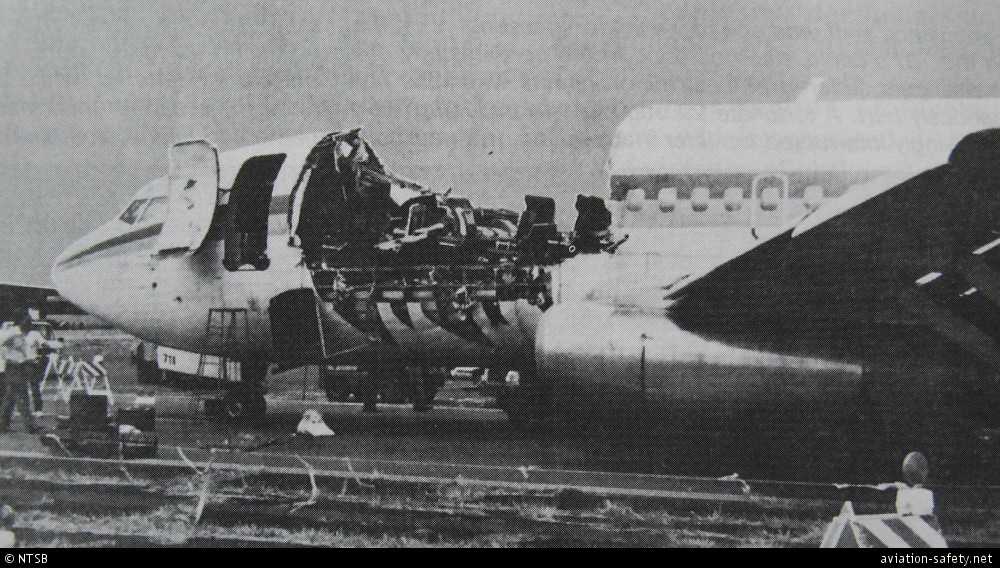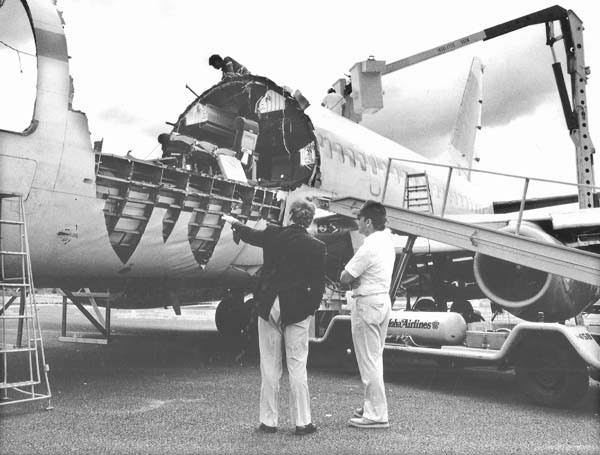Last updated on September 13th, 2024 at 04:29 pm
In 1988, the skies above Hawaii bore witness to one of the most unbelievable and astounding instances in aviation history.
Aloha Airlines Flight 243 experienced a catastrophic structural failure mid-flight. Against all odds, the crew managed to bring the aircraft safely to the ground with only one casualty.

Background
Aloha Airlines Flight 243, a routine inter-island flight from Hilo (on the island of Hawaii) to Honolulu (on the island of Oahu), took off on the afternoon of April 28, 1988. It contained a crew of five and 90 passengers.
The plane was a Boeing 737-200. This was a common plane used for commercial flights that was known for its reliability and safety. Prior to takeoff, the typical inspections and precautions were taken to ensure the safety of the flight.
But no one knew that a catastrophic failure was about to occur mid-flight. And that every safety precaution had failed to prevent it.
The Incident
Approximately 23 minutes into the flight, while cruising at an altitude of 24,000 feet, they were about a fourth of the way to their destination. But then, a section of the aircraft’s roof ruptured with a thunderous explosion.
The pilots recall turning around and seeing the sky where the ceiling of the first-class cabin had previously been. There was a hole where the cockpit door had been ripped off its hinges.
From the cabin to nearly the plane’s wings, the roof of the plane had been blown off in a violent decompression. In the process, 58-year-old flight attendant C.B. Lansing, who had been standing just under the roof that flew away, was ejected from the plane. Her body was never recovered.
Luckily all the passengers had been strapped into their seats. There were no other casualties, although 65 total passengers reported injuries after landing.
Challenges in the Sky
The sudden decompression subjected the aircraft to immense stress. Winds tore at the structure and threatened to rip the plane apart.
As the plane shook, the flight crew, led by Captain Robert Schornstheimer and First Officer Madeline “Mimi” Tompkins, began to take emergency action. Between the two of them, they had over 10000 hours flying this model of aircraft.
Captain Schornstheimer drew on his extensive experience. He decided to initiate an emergency descent to a lower altitude where the air is denser. This allowed for easier breathing for the passengers and crew.
Radioing ahead, the crew guided the plane towards the Kahului airport on Maui. On the way down, one of the plane’s engines failed.

The crew was unsure if the nose gear had properly deployed as they approached the runway. But against all odds, the crew was able to land the plane and safely rescue the remaining people on the plane.
As the aircraft touched down, the island immediately responded the best that they could. Passengers were transported to the local hospital in tourist vans, since the island only had two ambulances. The small island was ill-prepared to handle a tragedy at this scale.
Some of the tour guides had previously been paramedics. They set up a triage on the runway to expedite the emergency medical process and assist in getting those with the most pressing medical concerns to the hospital.
Everyone who landed with the plane survived. New regulations were put in place after the investigation into the incident.
Investigation and Findings
The National Transportation Safety Board (NTSB) conducted a thorough investigation into the incident. The focus was on understanding the factors that led to the structural failure and evaluating the response of the aircraft and its crew.
The investigation revealed that the fuselage failure was due to metal fatigue caused by multiple pressurization cycles over the years. The age of the aircraft, combined with frequent short flights in the salty and humid marine environment of Hawaii, contributed to the fatigue and corrosion of the frame.
A passenger, Gayle Yamamoto, even testified that she had noticed a crack in the metal before the flight. But she had not mentioned it to anyone.
Boeing had anticipated such metal fatigue issues. They had issued guidelines for inspections and repairs, but Aloha Airlines had not fully complied.
The investigation prompted a reevaluation of inspection and maintenance practices for older aircraft. This led to enhanced safety measures across the aviation industry. In future 737s, a second layer of metal sheeting was added around the fuselage to prevent such easy breakage and fatigue.
Legacy and Impact
The incident involving Aloha Airlines Flight 243 had a profound impact on aviation safety. The lessons learned from the investigation led to improvements in aircraft inspection protocols.
It emphasized the importance of addressing metal fatigue in aging aircraft. The aviation industry implemented more rigorous maintenance schedules and guidelines to prevent similar incidents from occurring in the future.
Additionally, the crew’s exemplary handling of the emergency situation became a case study in aviation training. Their ability to maintain control and execute a successful emergency landing underscored the importance of effective crew resource management and emergency preparedness.

